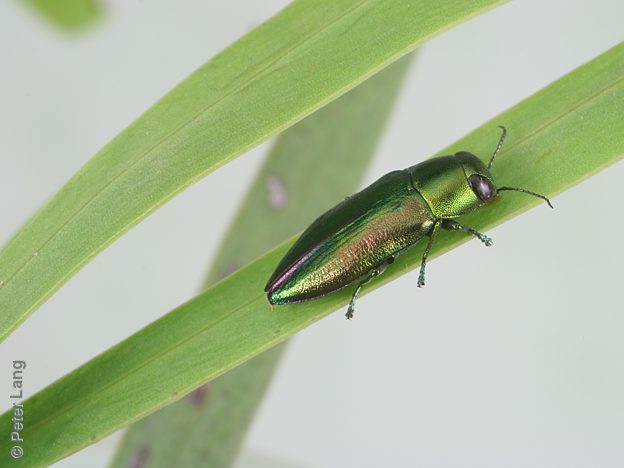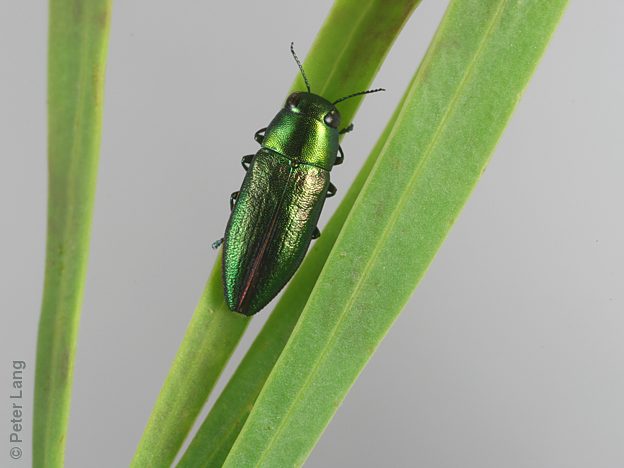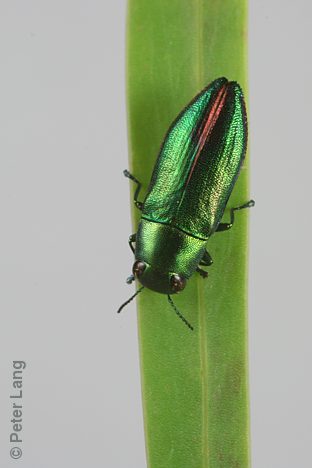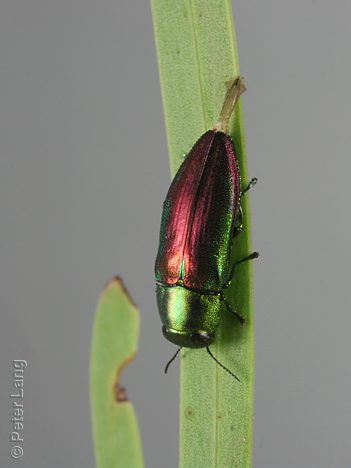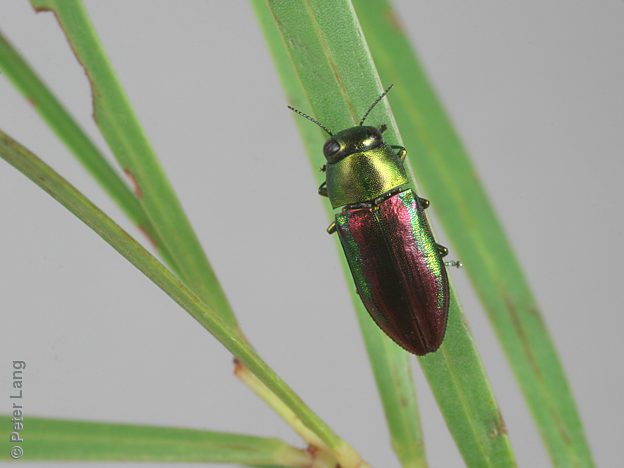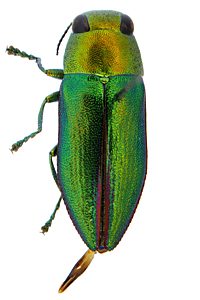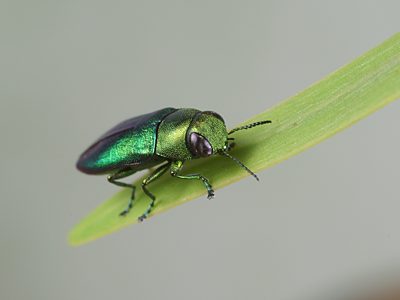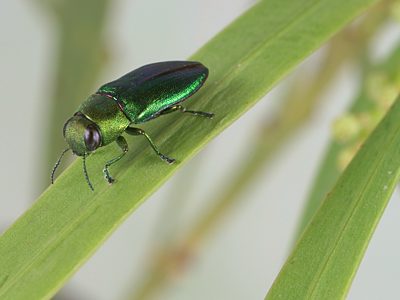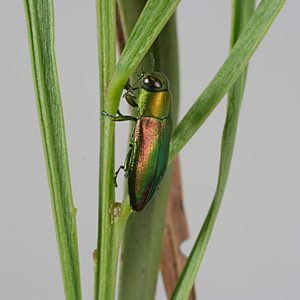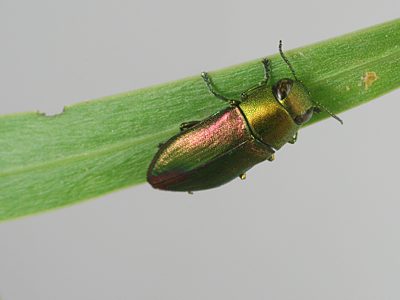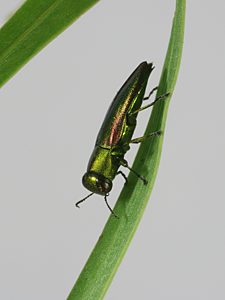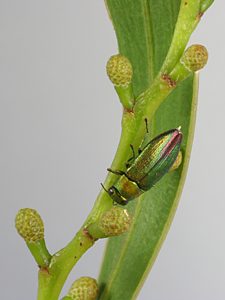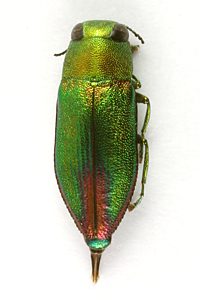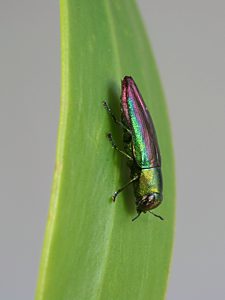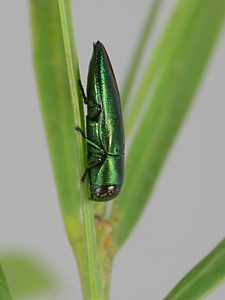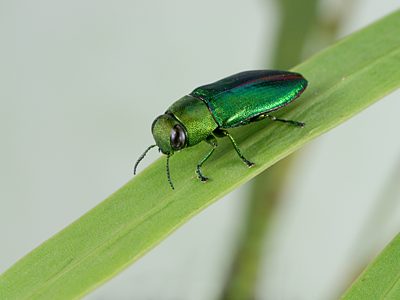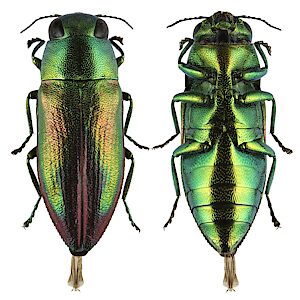A relatively small Melobasis species, with the head and pronotum green to gold and the elytra usually bright green with red to purple colouration varying in extent from a narrow sutural strip in the posterior to covering most of the area. The distal third of the aedeagus is strongly tapered.
This species, described by Blackburn 1887, was sunk within M. simplex by Carter 1923b. However it is quite distinct from that species of the M. melanura species group of Levey 2018 and instead belongs in his M. purpurascens species group. This is supported by mitachondrial DNA CO1 barcode sequences which group it with M. splendida.
It is commonly found on foliage of Wirilda Acacia retinodes and Golden Wattle Acacia pycnantha in the southern Mt Lofty Ranges. The records from MU Region are confined to the eastern flank of the Mt Lofty Ranges.
Forms with substantial areas of golden colouration occur occasionally but do not seem to be tied to any particular geographical area.
| Legend | records | count of breeding adults, pupae and larvae |
| sites | count of major sites (unique 10 km grid cells +/- some distinct approximate localities) |
| adult | live = extracted alive; dead = extracted dead as intact or fragmentary remains; ex billet = reared and emerged from stored sections of host; ex pupa = reared from sampled pupa |
| pupa | extracted pupa; pupa ex larva = reared pupa from larva |
| larva | extracted larva (any stage including prepupa) |
| gall (only) | hatched or unhatched gall identified by form and position rather than contents |
| Plant names in green are hyperlinked to a matching host species page with plant photos. |
I have reared large numbers of this species from billets cut from dead stems of Wirilda Acacia retinodes, and also from dead stem billets of Golden Wattle Acacia pycnantha.
| ¹ Legend | regions | SA State Herbarium regions (map)
EA: Eastern, EP: Eyre Peninsula, FR: Flinders Ranges, GT: Gairdner-Torrens, KI: Kangaroo Island, LE: Lake Eyre, MU: Murray, NL: Northern Lofty, NU: Nullarbor, NW: North-Western, SE: South-Eastern, SL: Southern Lofty, YP: Yorke Peninsula |
| size | The ellipse is the correct size when printed, indicative on a desktop screen, and likely to be wrong on a mobile device. |
